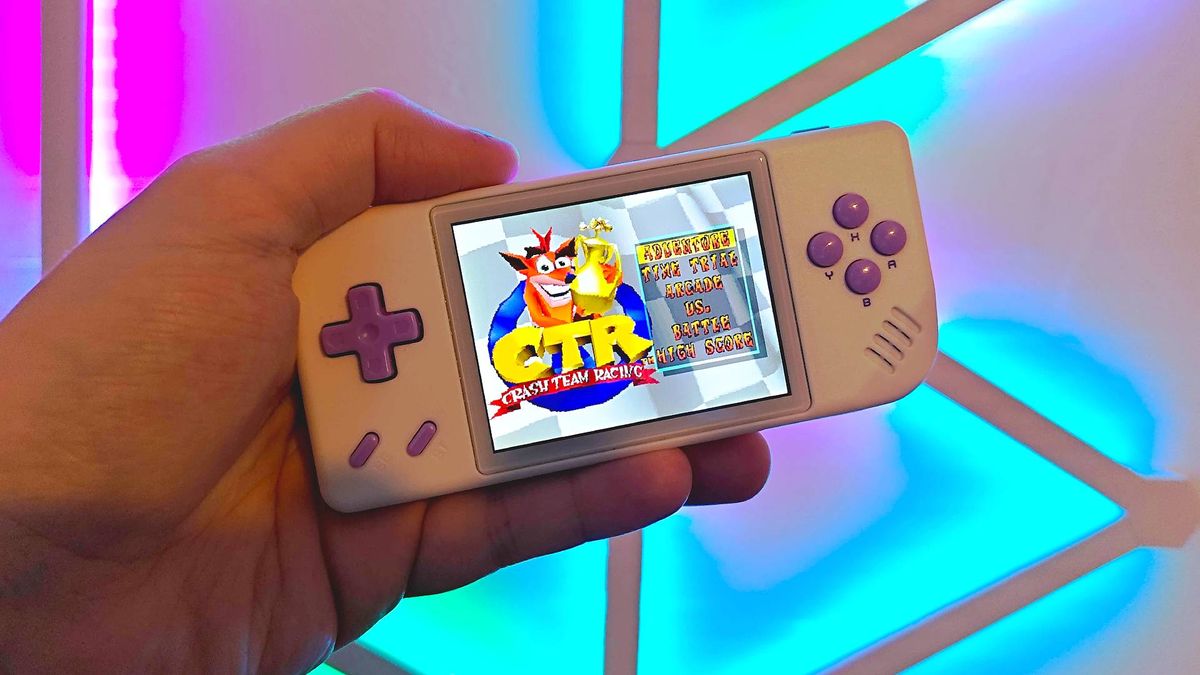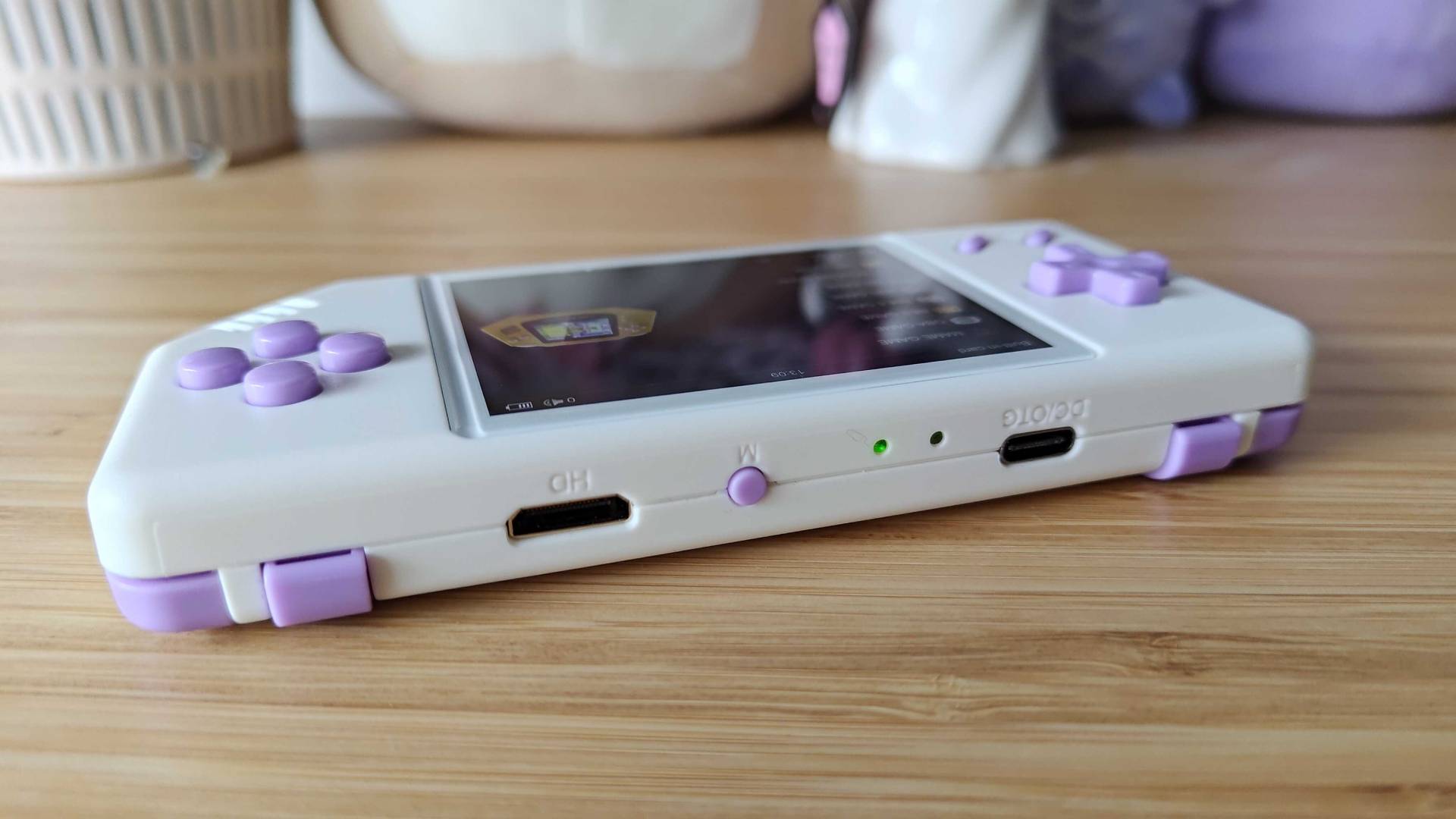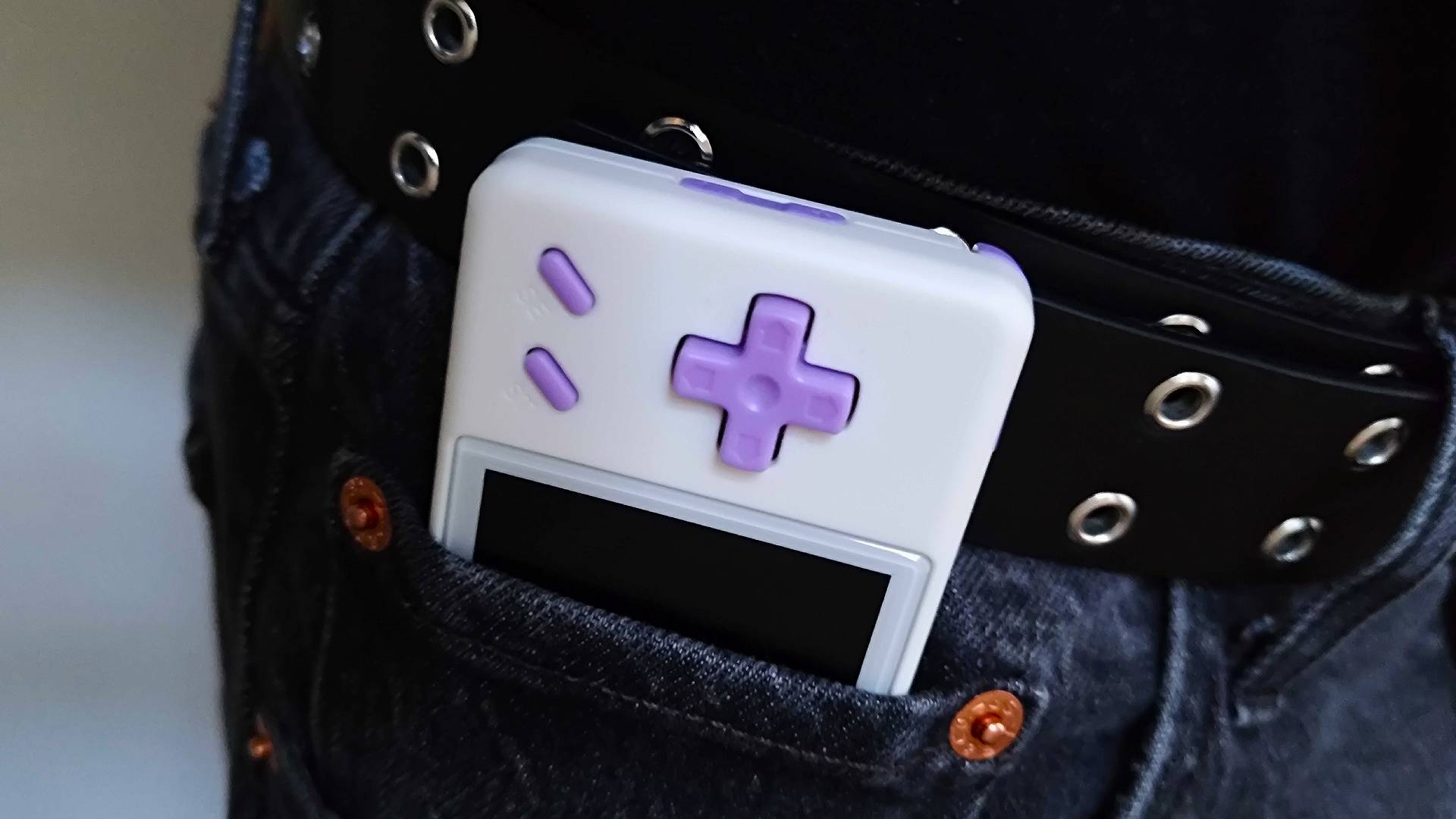Upon taking the Anbernic RG28XX out of its cardboard prison, I couldn’t help but laugh at how small this handheld is. Don’t get me wrong, I expected something compact since it takes design queues from the Game Boy Micro, but seeing it in the flesh hits completely differently. Thankfully, its tiny footprint doesn’t come at a cost to either comfort or power, and the itty-bitty device actually provides an excellent emulation punch.
Coming in at around $54, the Anbernic RG28XX is easily one of the most affordable gaming handhelds I’ve tested this year. It sits proudly at the budget table alongside other favorites like the Super Pocket and its Anbernic RG35XX Plus sibling, offering up a pretty inexpensive way to emulate retro consoles and revisit classic capers. Plus, it’s a complete space saver for players looking to carry around a tiny time capsule, particularly if you’re into 16-bit adventures.
Can the Anbernic RG28XX keep up with your expensive gaming phone? Nah, probably not, but pitting two devices like that against each other defeats the point. We’re talking about a budget handheld that fits in my weird tiny jeans pocket, which can’t be said for most modern “portable” devices. As someone who frequently lugs the Steam Deck OLED around with a power bank for life support, this cheap device makes for a nice low-spec break away from the weight of modern tech.
Design
If you’ve got any memories of the Nintendo Game Boy Micro, you’ll know exactly what Anbernic is aiming for with the RG28XX. It doesn’t mimic that handheld in the same way as the Anbernic RG35XXSP, which honestly feels like an eerie GBA SP doppelganger, but it shares a similar size and horizontal sensibilities to Ninty’s last Game Boy.
There are plenty of obvious differences, like the missing cartridge port at the bottom and the presence of four smaller face buttons rather than two. The start and select buttons also live on the left-hand side and borrow their look from the OG Game Boy. On top, you’ll find two sets of shoulder buttons, with the edge R1 set sitting recessed in the shell and the R2 “triggers” protruding up top. They’re not unusable by any means, but can feel slightly cramped depending on your game of choice.
The RG28XX buttons are far more tactile than I expected, especially since they produce a noticeable rattle when shaken. That’s normally a red flag for build quality, but the sound seems exclusively tied to that aforementioned R2 shoulder set. I’m going to give the slightly cheap vibes a pass since it seems to be a symptom of using microswitches feeding into a more hollow cap, which produces a far more satisfying feel than standard membranes.
The RG28XX is satisfyingly clicky even when it comes to its membrane buttons. I’ve used far too many cheap handhelds that end up upsetting my thumbs with mushy inputs, so Anbernic has absolutely made my Christmas card list thanks to its diligence. Less effort has been placed into the design of the volume rocker, power button, and menu toggle, but I guess keeping them low-profile at the sides and top keeps things streamlined.
The RG28XX has you covered for overall build quality, with serviceable feeling plastics and a healthy weight. The whole handheld is just under 5 inches wide, but Anbernic seems to have packed enough inside the little guy to help it feel substantial. A lot of that space is taken up by a 2.83-inch IPS display with a laminated front, and the glass contributes to the device’s overall rigidity.
Features

Armed with a quad-core ARM Cortex-A53 and a custom Linux operating system, the RG28XX was born to emulate. The same applies to most Anbernic handhelds, but this one embodies the idea of providing specific features and specs for running your old ROM collection. The OS has a bunch of emulators baked in, supporting everything from the OG Game Boy to the PS1. You can even stretch to Dreamcast if you fancy, but you’ll have to find something else for your PS2 cravings since we’re talking about an ARM chip.
Anbernic’s custom Linux setup is accommodating when it comes to emulation settings, providing heaps of options from themed borders to more technical dials. Some screens should look pretty familiar since the device uses Retroarch cores under the hood, albeit with a slightly modified UI tailored to the RG28XX. I’d argue that you shouldn’t have to do much tinkering, especially when it comes to scaling beyond the handheld’s abilities. But, if you do want to mess around, or fill any letterboxing with cute overlays, you can easily do so by hitting the top menu button in-game.

As I previously spoiled, there’s a 2.83-inch IPS screen driving all those wonderful retro visuals to your eyeballs, and it holds up really well despite being 640 x 480. That lower resolution is perfect for a setup like this since it’s small enough to still look sharp and helps cut the dual-core Mali-G31 GPU some slack. Playing in direct sunlight will be a challenge, but I found its brightness capabilities and viewing angles to be more than adequate in most scenarios.
If you do like to plug your handhelds into a gaming TV or monitor, you’ll be pleased to hear there’s a mini HDMI port waiting in the wings. Just keep in mind that the RG28XX will have to work harder if you’re aiming for even 1080p visuals, and I’d say 4K is a bit of a no-go for this handheld. Still, it’s nice to have the option to hand, and there will be some games that’ll scale up nicely on larger screens.
Some easy-to-miss extra features include built-in rumble, a front-firing “high fidelity” speaker, 2.4G wireless controller compatibility, and OTG support via the top USB-C port. The handheld’s 3,100mAh battery is also worth highlighting since it provides the device with a good supply of juice (Anbernic claims 8 hours of playtime.)
Performance
Typically speaking, you get what you pay for with gaming handhelds. That absolutely applies to emulators too, but the RG28XX makes it feel like your $60 is stretching further. Is that because its smaller-than-average screen helps its innards pull off more games at full speed? Quite possibly, and I’d say that’s a testament to Anbernic’s hardware and specs pairings.
At this stage, even the nastiest nuggets from the usual cheap online stores can reliably run 8-bit games. It therefore makes sense that the RG28XX can manage everything up to and including the PS1 at largely full speed, but even Dreamcast holds up pretty well. I wasn’t entirely sure whether PS1 emulation would be a bit much for the little fella, yet, I’ve been playing favorites like Crash Team Racing and Tekken 3 throughout testing without a hitch. The former kart racer is actually surprisingly playable using this handheld’s cramped-looking controls, and it took around an hour for any strain to set in using the back triggers.

Again, the RG28XX can do Dreamcast, but there’s some minor audio stuttering in the likes of Ikargua. I’m not remotely concerned about that since I was able to blast The Offspring out of its speakers without any nonsense by playing Crazy Taxi. Sega’s arcade racer feels pretty amazing on a console this size, with subtle rumble, loud sound, and bright visuals convincing me this is an excellent way to play. Put it this way, I can’t promise I won’t hide this handheld alongside a hipflask for my sister’s wedding next year. Don’t judge me.
As for battery life, putting the RG28XX to work as a tiny Dreamcast resulted in a 7-hour runtime. Similar sessions netted around 8 hours, making good on Anbernic’s promises. However, when sticking to just Game Boy/GBA emulation, I was able to keep things going for around 10 hours, which is slightly bananas. I suspect other older handheld emulators will yield similar results, meaning this could be a dream Pokemon machine for anyone doing a lot of traveling.
Should you buy the Anbernic RG28XX?

For well under $60, it’s hard to think of a reason not to pick up the Anbernic RG28XX if you need a cheap retro gaming device. Small things like its slightly rattly shoulder buttons and compromised form factor keep it from perfection, but it’s a surprisingly capable handheld that provides lightweight access to a large chunk of classics.
As with all emulation devices, the kicker is that you’ll need your own collection of backed-up ROMs. If you’ve still got a bunch of old games that you want to play on a cheap and cheerful handheld, that’s actually a good thing, but if you’re looking for a platform you can actively buy games for, something like the Super Pocket might be a better option.
That aside, the RG28XX is one of the best pocket-sized handhelds I’ve tested to date, especially since it can run far more than just Game Boy adventures. If you haven’t got a dedicated device for emulation, or you don’t want to use your smartphone as a makeshift console, Anbernic’s pocket rocket is well worth a look.
How I tested the Anbernic RG28XX
For a month, I used the Anbernic RG28XX as my main handheld for retro gaming. During that time, I used a selection of test games including Crash Team Racing, Tekken 3, and Crazy Taxi to assess the device’s emulation abilities while taking notes regarding comfort, visual fidelity, and battery life.
For more information on how we test handhelds and other portable gaming devices, check out our full GamesRadar+ hardware policy.




















Leave a Reply